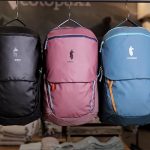Having outgrown shoes, shirts and even backpacks they've used the last two years, children heading back to school this year will arrive in style. The National Retail Federation's 2010 Consumer Intentions and Actions Back to School survey found that the average American family will spend $606.40 on clothes, shoes, supplies and electronics, compared to $548.72 last year, and close to the $594.24 in 2008.
“We are encouraged by the fact that parents are eager to start their back to school shopping this year, but the industry still remains cautiously optimistic about recovery,” said NRF President and CEO Matt Shay. “As the second half of the year gets under way, retailers will gauge their customers' spending appetites, which often serve as a bellwether for the all-important holiday season.”
There remains no question that the economy will continue to play a role in American families' back to school preparations. This year's survey found that 44.3 percent of Americans will buy more store brand or generic products, compared to 41.7 percent last year. Additionally, more parents will comparative shop online (30.3% vs. 26.4% in 2009.) The state of the economy will also impact some families' lifestyles, such as deciding whether their child should attend public or private school (8.1% vs. 5.7% in 2009).
Most families agree that growing children means growing apparel budgets. Spending on apparel will take up the majority of consumers' budgets with the average family of school-aged kids expected to spend $225.47 on jeans, shirts and other types of clothing. Running the gamut from laptops and net books to smart phones and MP3 players, parents are expected to spend an average of $181.60 on their children's electronic or computer-related school needs. Families will also spend an average of $102.93 on shoes and $96.39 on school supplies.
As far as where families will shop this year, seven in 10 (71.2%) will head to a discount store and more than half (53.9%) will visit their favorite department store. Other popular shopping destinations include clothing stores (49.0%), electronics stores (23.0%), office supply stores (41.2%), drug stores (19.5%) and thrift stores (17.0%). Whether to save a few bucks and compare prices or simply because of the convenience, more people will shop online this year (30.8% vs. 22.2% last year.)
The survey found that teenagers and pre-teens will dish out more of their own money for apparel, supplies and accessories this year. Teenagers are expected to shell out an average of $31.74 for school items, up slightly from $30.88 last year. Pre-teens will spend an average of $18.27, up from $11.94 in 2009. When it comes to how much say children have in parents' buying decisions, six in 10 adults (61.1%) say their children influence 50 percent or more of their back-to-school purchases.
Nearly half (47.6%) will begin their shopping three weeks to one month before school starts and one-quarter (24.8%) will start one to two weeks before school begins. Some will get a jump start and begin shopping two months before the new school year (21.6%). Three percent (3.0%) will wait until the week school starts or even after school begins.
Spending on Back to College Merchandise to Increase Slightly
More College Students Fly the Coup After Two Years With Mom and Dad
While spending on school items for K-12 students is expected to increase this year, spending on college-specific items will remain similar to last year. NRF's 2010 Back to College Consumer Intentions and Actions survey found the average college student's family will spend $616.13 on new apparel, furniture for dorms or apartments, school supplies and electronics. Students and their families spent only slightly more last year ($618.12). Total spending on back to college merchandise is expected to reach $33.77 billion.*
Combined K-12 and college spending will reach $55.12 billion*, serving as the second biggest consumer spending event for retailers behind the winter holidays.
“This year, parents will make sure to shop smart, stocking up on necessities like gift cards, apparel and personal care items for their everyday needs,” said NRF President and CEO Matt Shay. “Some families may not have the luxury of providing extra spending cash for their child throughout the year, so preparing ahead of time will at least guarantee their child has the essentials.”
College students and their families will spend the most on electronics, though not nearly as much as last year. The average family will shell out $236.94 on computers, cell phones, MP3 players, cameras and other electronics; down from the $266.08 estimated last year when spending on electronics reached an all-time high. Other expenditures include shoes ($62.20), collegiate branded gear or supplies ($36.26) and school supplies ($62.91). College students will spend significantly more on dorm or apartment furnishings this year, signaling a change from last year when more students lived at home to save their family money. Families are expected to dish out an average of $96.94 on bedding, microwaves, small refrigerators and chairs, up from $80.06 last year.
The survey found that just over half (51.8%) of college students will live with mom and dad, down from 58.5 percent who lived at home last year when money was tighter and jobs were more scarce. That being said, those planning on living at home encompass more than any other group. Nearly one-quarter (23.0%) will live off campus in an apartment or house, 18.8 percent will live in a dorm room or other college housing and 2.0 percent will go Greek and live in a sorority or fraternity house.
“As more students fly the coup this year, some retailers can expect a nice boost in the home furnishings and accents departments,” said Phil Rist, Executive Vice President, Strategic Initiatives, BIGresearch. “Smart retailers would stage merchandise mom and dad would like near the Back to College aisles to boost parent impulse purchases while shopping with their college-bound children.”
When asked how the state of the U.S. economy will impact their back to college purchases, 34.1 percent of families responded they would buy more store brand or generic products, up from 32.5 percent last year. Families will also shop online more often (18.2%) or share or borrow textbooks instead of buying new ones (19.3%). One in five (20.6%) said their back to college plans will not change.
Most college students (53.8%) will buy what they need from discount stores, 42.5 percent will head to department stores and more than one-third (36.5%) will shop at office supply stores. Other popular shopping destinations will include online (28.6%), clothing stores (28.2%), electronics stores (18.0%) or drug stores (17.0%). Forty-three percent are planning on buying decor, apparel or other items school from their college bookstore.
The survey found one-third (33.1%) of college shoppers will begin hitting the stores one month before school starts, with 23.2 percent preferring to wait a bit longer and go one to two weeks before school starts. One in five (20.2%) will start at least two months before school starts, 12.6 percent will wait until the week school starts and 10.9 percent will go after they've already started school.
About the Survey
NRF's 2010 Back to School and Back to College Consumer Intentions and Actions Surveys were designed to gauge consumer behavior and shopping trends related to back to school spending and back to college spending. The poll of 9009 consumers was conducted from June 30 – July 7, 2010. The consumer polls have a margin of error of plus or minus 1.0 percent.















